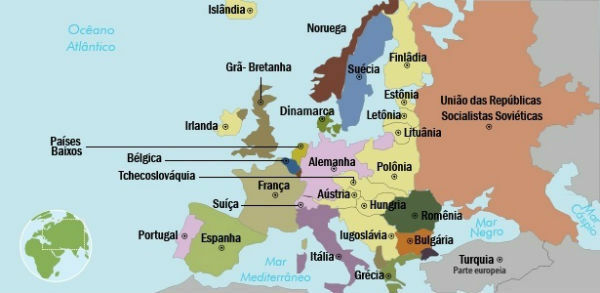On November 11, 1918, World War I came to an end. The German government signed the surrender, accepting all the impositions of the victors.
The winners then gathered in Versailles, France, where they discussed the terms of the Treaty of Versailles.
Main consequences
World War I left thousands dead, changed the European map and the way of doing diplomacy.
Human and Material Losses
The war left nearly 13 million dead and left 20 million injured and maimed.
In this conflict, powerful weapons were used: asphyxiating gases, long-range cannons, machine guns, flame throwers, tanks, planes and submarines. Many were first used in a war.
Even the victorious countries had lost much of their young male population and those who returned from the war were maimed or seriously mentally ill. Material losses were also enormous and roads, bridges, entire cities had to be rebuilt.
A period of decline in Europe began, with the social problems of unemployment, hunger and misery. Political and social instability favored the emergence of totalitarian regimes.
Given this situation, societies were apprehensive about the possibility of a new world conflict of greater proportions and consequences than the first, which in fact happened with the Second World War.
New Countries
Four empires that were considered solid before 1914 simply collapsed: German, Austro-Hungarian, Russian and Ottoman.
Like Treaty of Versailles, from the rubble of these empires emerged new countries such as Poland, Czechoslovakia, Yugoslavia, Austria, Hungary, Estonia, Lithuania and Latvia.
Already the Ottoman Empire saw its borders shrink. The modern state of Turkey emerged, which had to recognize Armenia's independence. It fell to France and England to administer under mandate the territories of Syria, Lebanon and Iraq.

League of Nations
The creation of League of Nations, in January 1919, based in Geneva, Switzerland, was inspired by the peace proposals of US President Woodrow Wilsoon.
The aim was to get nations to diplomatically discuss their problems before going to war.
U.S
The United States was the big winners of the conflict.
They traded for more than three years with the Allies, did not see their territory invaded by enemies and still became creditors of the European nations.
Their industries would not suffer competition from Europe and their losses were small compared to those of the European partners. For all that, the country would continue its rise as a world power.
Read too:
- First World War
- Major Battles of World War I
- Causes of the First World War
- Phases of the First World War
- Brazil in the First World War
- trench warfare
- Questions about the First World War
- Movies about the First World War
- Beginning of World War II

